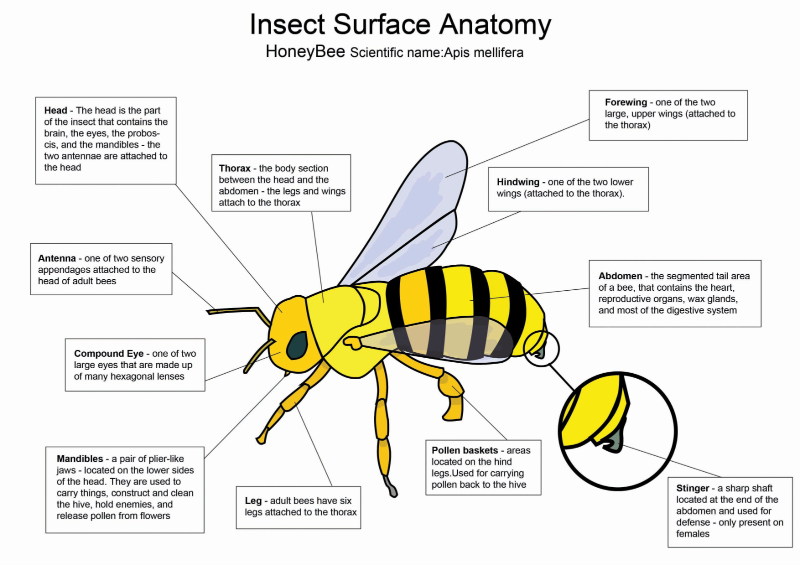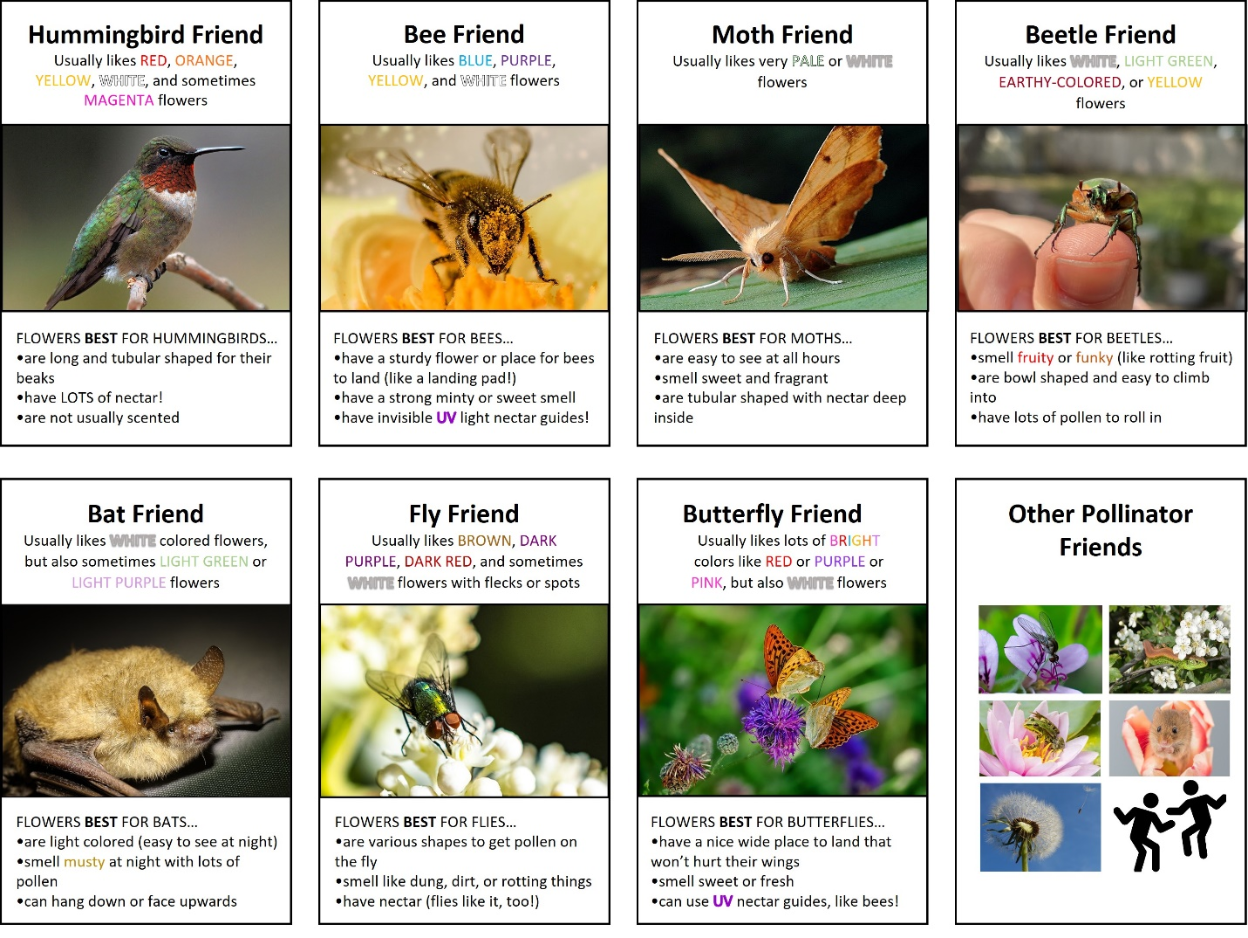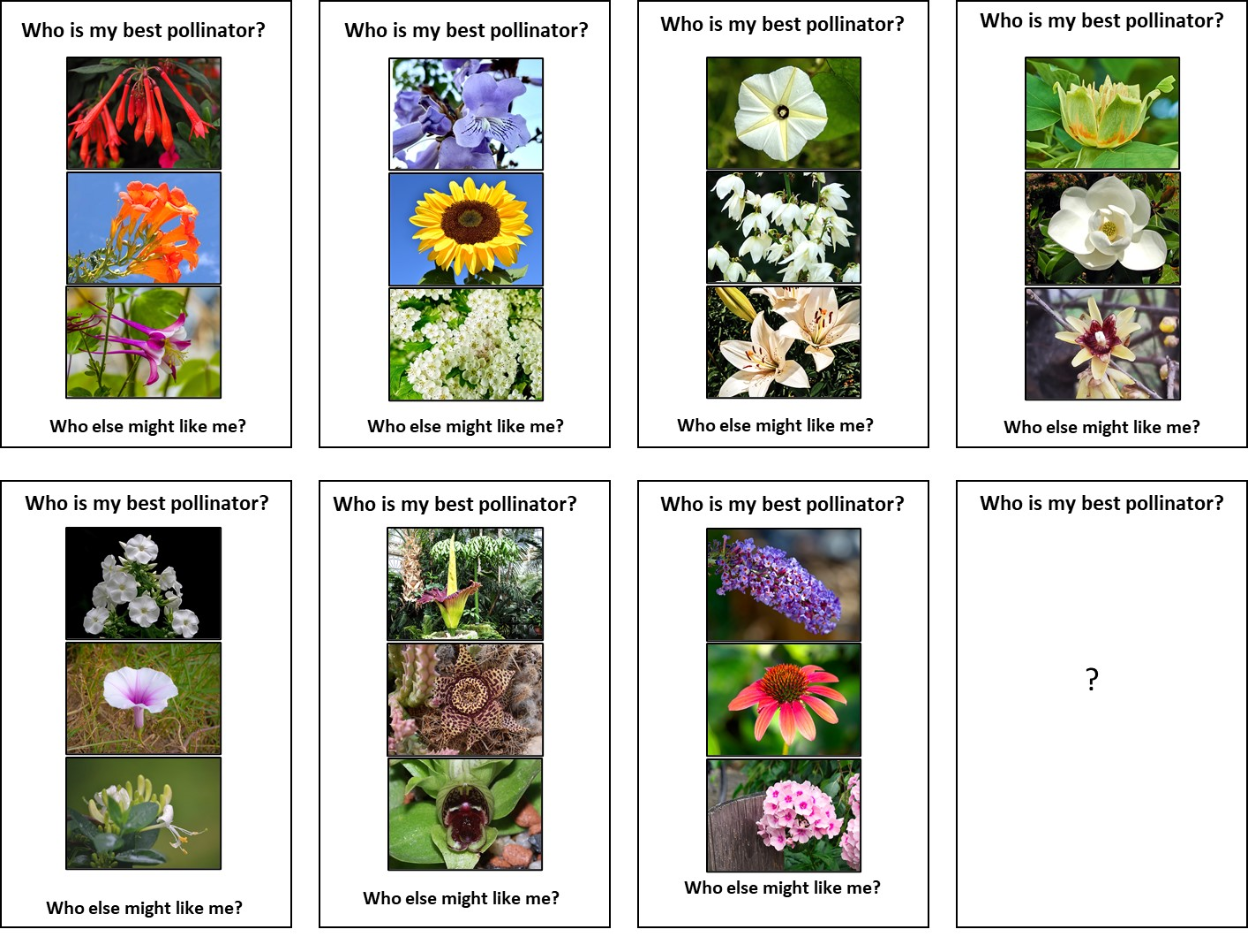
Bees: Anatomy, bee model, pollination, & flowers as attractors
Essentially, all models are wrong, some are useful.
George Box
Overview
Introduction
Activities to study bee anatomy, create a bee model, learning about the the advantages and limitations of models, and relate pollinators to their relationship of using shape and color to differentiate different flowers that they may or may not pollinate. Also a movie of two bees cooperating to unscrew the cap from a bottle.
Bee Anatomy

Bee Model
Materials
Bee Model you need the following materials for each bee model.
- Popsicle stick (pre-notched or regular),
- 30 cm length of string
- three pom-poms (assortment of black and yellow)
- one white chenille stem (pipe cleaner), and
- glue
Body
Glue three pom-poms together to form the body of the bee. Alternate colors to create a typical banded coloration found in bees. School glue will work to hold the pom-poms together, however it will take a while to dry.
A glue gun works faster. However, consider safety issues when using glue guns. Always have an adult supervise or do the gluing, depending on the student's ages. Best to use low-temperature guns, wear safety goggles and heat resistant gloves, and only handle the model when the glue has cooled and dried.
Head & antenna
Can use another pom-pom for the head and a chenille stem the antenna Or a chenille for the head and antenna
Wings
Use a chenille stem to create the wings. Place the chenille stem perpendicular to the pom-poms between the head and the pom-poms representing the body. Adjust the chenille stem so that an equal length extends on each side. Then, fold both sides of the
stick upwards to create a V-shape that wraps about the pom-poms and twist the two exposed
ends of the stick together to secure the bee. Fold each of the remaining portions of the chenille stem into a loop to create the bee wings. May want to twist the loose ends at
the base to secure each wing.
Stinger
Chenille sticks can be cut glued.
Hanger
Use a piece of string and tie one end onto the notch in the
Popsicle stick and the other end onto the base of the bee wings. Tyeing the string to the
chenille stem is better than to the pom-pom body. This will help balance the bee balance when suspended
from the string, by adjusting the wings.
Flying
The bee can be made to fly by holding up the Popsicle stick and using the bee as a string puppet.
Focus and study questions
- How is a bee model accurate and not accurate?
- Compare your model to the anatomy of a bee?
- Why do animals such as bees travel to flowers?
- How do bees choose which flowers to visit?
- Which flowers attract which pollinators?
- Which pollinator will be attracted to this
flower? - What features of the flower attract that
pollinator? - Which types of flower or pollinators did
you find most often? - What pattern did you find about which
pollinators were on flowers of a given
shape, color, or smell? - What flower parts attract pollinators?
- How is the flower model similar to and different from the actual living flowers?
Pollinators - image & notes

Pictures Source
Flowers - images with pollin to discuss what might attract pollinators.

Pictures Source
Assessment outcomes
- Describes why a pollinator might visit a flower. gather nectar for honey.
- Describes how a pollinator is attracted to specific aspects of a flower’s form. the color
- Describes how a pollinator might transfer pollen from one flower to another. pollen sticks to the pollinator and falls off on the flower.
- Describes pollination as necessary for flowering plants to form seeds and fruit for reproduction.
Source article
Bee Time: Second grade students learn about pollination and ecosystems through art-integrated modeling activities. by Bria Marty, Kristy Daniel, & Michelle Forsythe. Science & Children. July/August 2023.
Bee movie showing two bees opening a bottle